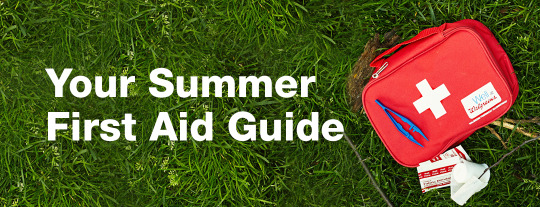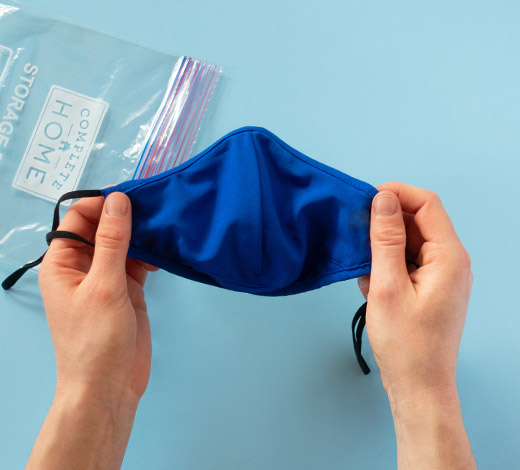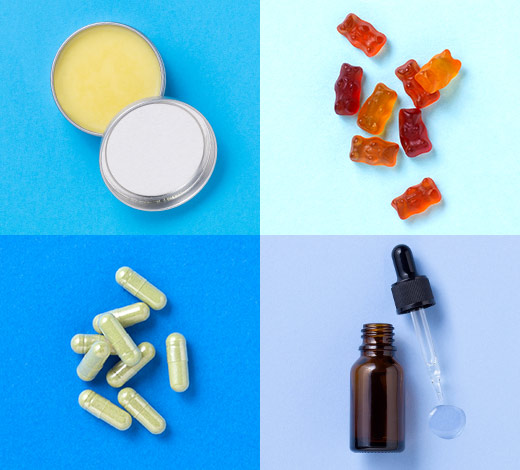
Summer is a time for fun outdoor experiences. But sometimes splashing, hiking and adventuring in the heat can lead to accidents and injuries. From twisted ankles to sunburn to bug bites, here’s how to stay safe and avoid summer hazards.
Submersion injuries and drowning
Swimming is the ideal way to cool off on hot summer days. But water also can be dangerous if you don’t take the proper precautions. Submersion injuries or near-drowning events, can happen in a matter of seconds. While children 5 years and younger have the highest risk, accidental drowning is also the second leading cause of death in people ages 5–24 years.
Prevent it:
- Don’t leave children unattended when near or in water.
- Only get into a pool, lake, ocean or other body of water if you know how to swim.
- Never swim alone. It’s a good idea to only swim when a lifeguard is present.
- Always wear a life jacket when boating.
- Learn CPR (Cardio Pulmonary Resuscitation).
Treat it: Follow the American Red Cross Chain of Drowning Survival:
- Recognize the signs of someone in trouble and shout for help.
- Rescue and remove the person from the water (without putting yourself in danger).
- Have someone call 9-1-1 and begin CPR if the person is not breathing until medical help arrives.
Twisted ankle
Sprains are twisted or torn ligaments that can quickly swell and cause pain. Ankle sprains are the most common type of sprains. They can happen when you walk or run on an uneven surface, twist your ankle too far or land awkwardly on your foot.
Prevent it:
- Wear appropriate shoes for the activity when hiking or playing sports.
- Watch your step when walking on uneven surfaces.
Treat it:
Follow the RICE approach – rest, ice, compression and elevation:
- Rest the injury for as long as your health care provider says to. Know that ankle sprains can take anywhere from days to months to heal.
- Ice the injured area with a cold pack as soon as possible. For the next couple of days, continue to use ice four to eight times a day for 15–20 minutes each time.
- Compress your ankle with a bandage or elastic wrap.
- Elevate your leg to be higher than your heart when possible. This can help reduce swelling.
Heat-related illnesses
Hot, humid weather causes us to sweat, and for a good reason. Sweating is your body’s way of cooling itself off. But in extreme heat, your temperature may increase faster than your body can cool down. This can lead to heat-related illnesses, such as dehydration, heat exhaustion and heat stroke.
Prevent it:
- Schedule outdoor activities during the morning and evening hours, when it’s coolest. During the day, take plenty of breaks in the shade.
- Dress in loose-fitting, lightweight and light-colored, clothing.
- Drink plenty of water. Don’t wait until you’re thirsty to drink. Your fluid needs are higher in hot or humid conditions.
- Be careful when exercising in the heat. You may need to dial back the intensity and duration of your workouts until you’re used to being active in hot weather.
Treat it:
- Know the signs of heat exhaustion and heat stroke:
- Heat exhaustion can cause heavy sweating, cool, pale or clammy skin, a fast, weak pulse, nausea and vomiting, dizziness, muscle cramps, tiredness, headache and fainting.
- Heat stroke can cause a body temperature above 103 degrees Fahrenheit, hot, red, and dry skin, a fast, strong pulse, nausea, dizziness, confusion and loss of consciousness.
- If you have signs of heat exhaustion, get out of the heat. Move to a cool place, loosen your clothing, put cool cloths on your body and take sips of water. If you’re vomiting or if your symptoms don’t get better with treatment, get medical help right away.
- If you have symptoms of heat stroke, call 9-1-1 at once. Heat stoke is a medical emergency.
Sunburn
Not only is sunburn painful, but the damage to your skin increases your risk of skin cancer. What’s more, sunburn hinders your body’s ability to cool itself down. It can also make you dehydrated.
Prevent it:
- Seek shade when you go outside.
- Wear a wide-brimmed hat, sunglasses and long sleeves and pants made from a tightly woven fabric.
- Apply a generous amount of a broad-spectrum sunscreen with a SPF 15 or higher to all exposed skin at least 30 minutes before you head outdoors. Reapply sunscreen at least every two hours or right after swimming, sweating or toweling off.
Treat it:
- Drink enough water. This can help replace fluids and prevent dehydration.
- Use a cool, wet washcloth on affected skin or take a cool bath.
- Apply topical aloe, a moisturizing cream or 1% hydrocortisone cream to your burned skin.
- Consider taking an over-the-counter (OTC) pain medication, such as ibuprofen, acetaminophen or aspirin, to reduce pain and fever.
- Avoid spending time in the sun until your sunburn is healed.
Bug bites
Mosquitoes, red ants and other insects often show up as unwanted guests at summer get-togethers. While they’re often harmless, their bites can be painful or itchy.
Prevent it:
- Use insect repellent on exposed skin. Choose one with 20–30% DEET. Apply the repellent as directed according to the package directions.
- Choose your clothing carefully. If you’ll be outside at night or in a wooded area, wear clothing that will protect you from bug bites. Wear long sleeves and pants, socks and closed-toed shoes.
Treat it:
- Apply an ice pack to reduce swelling.
- Try an over-the-counter (OTC) anti-itch cream, such as hydrocortisone cream, on mosquito bites and other bites that itch.
- Consider using an OTC pain medication for painful bites and stings.
- Prevention is often easier than treatment. Still, adverse summer events can happen when we least expect them. Knowing how to deal with common summertime misfortunes may help you feel better prepared as the weather warms up.
Sources:
https://www.cdc.gov/disasters/extremeheat/warning.html
https://www.aad.org/public/skin-hair-nails/injured-skin/treating-sunburn
https://www.cdc.gov/cancer/skin/basic_info/sun-safety.htm
https://www.aad.org/public/skin-hair-nails/injured-skin/bug-bites-and-stings
http://www.nsc.org/learn/safety-knowledge/Pages/news-and-resources-water-safety.aspx
http://www.redcross.org/news/article/Be-Safe-in-the-Water-with-the-Red-Cross
https://familydoctor.org/ankle-sprains-healing-and-preventing-injury/
https://www.cancer.org/cancer/skin-cancer/prevention-and-early-detection.html


